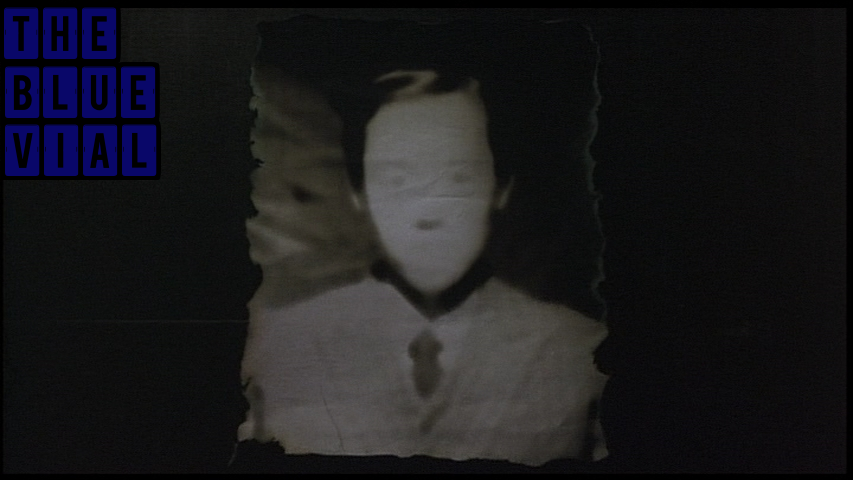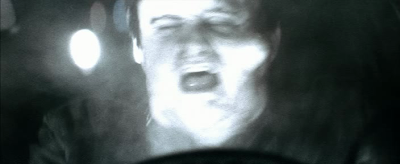
Robert Frank, that most notable of great American photographers to emerge from the post-war period, and novelist/screenwriter Rudy Wurlitzer collaborated on the quirky and offbeat 1988 road movie, Candy Mountain. It's a charming and somewhat forgotten ode to the road, myth, music, and what it means to truly be free. The film announces itself as a unique presence immediately, as the main credits are presented in a non-traditional sideways scroll over a meditative shot of downtown skyscrapers. We are then introduced to Julius Book (Kevin J. O'Connor), a construction worker taking in the cityscape through the window of a high-rise building being worked on. He seems to be in deep contemplation, and after a few seconds, casually walks out on his job with a liberated expression on his face, having apparently made some kind of crucial life decision. His decision: to be a musician. Well, a successful one at least. In fact, it's tough to discern at moments in the film whether Julius is more passionate about the music, or its capitalist possibilities. He goes to retrieve his guitar from a couple of hoods (one played by the legendary Joe Strummer), and instead of getting his guitar back, they give him a no-paying gig with rock musician Keith Burns (David Johansen, of New York Dolls fame.) Julius struggles during the rehearsal - it's clear that he's not a terribly promising musician - and is on his way to getting booted from the gig, when he hears Burns gushing about a wonderful guitar, made by one Elmore Silk. "Who's Elmore Silk?" Julius asks a young boy nearby. "Only the best goddamn acoustic guitar maker in the country" the boy replies.
Julius ends up convincing Burns that he knows Silk - whose reputation at this point has been elevated to near mythical status, due to no one having seen him in many years - and is hired by Burns as well as a core of Silk's other friends to find the legendary guitar maker. His guitars sell for a fortune, the cheapest around $20,000, and if Julius is able to track the man and his instruments down, it will ensure him the capital and means to go about getting the ball rolling on his own career. Up until this point, the film is an intriguing character study on the enigmatic Julius, a chronic liar and terrible boyfriend who wishes for nothing more than to hit the road and pursue the dream of a successful music career, a performance anchored down by the soulful and goofy rockabilly-swagger of O'Connor (recently seen in There Will Be Blood as Daniel's "brother" Henry.) But then the film really comes to life as it shifts into an utterly charming road picture, as Julius hits the highway in search of the mysterious Silk. Candy Mountain takes a vignetted approach to the rest of its story, as Julius swoops from one encounter to another, meeting up with various people from Elmore's past in the form of friends, family, and old lovers, who give out bits and pieces of information on Silk that collectively shed light on the myth that surrounds the man. Among the people Julius encounters: Elmore's brother, Al (Tom Waits), a successful former musician who lives in opulence; his daughter (Laurie Metcalf), a poor, troubled brat living in a dysfunctional situation at a trailer park; and Cornelia (the great Bulle Ogier), an old flame living in a cabin taking care of her ailing mother.
The vignettes all range from sweet (the Ogier one) and surreal (Julius gets taken as a prisoner in the home of a Canadian constable and his father) to arbitrary (one involving a woman hunting a deer felt entirely tacked on), but the movie nevertheless retains a consistently gentle vibe beneath the raucous unpredictability of its events. Director Frank's photographic eye captures the striking beauty of the various countrysides with picturesque splendor, and the soundtrack - mostly comprised of a soft acoustic rock guitar with contributions from Dr. John, Leon Redbone and Rita Macneil - provides a nostalgically Americana companion for the equally evocative photography. There is also an interesting motif involving automobiles that runs through the movie; every time Julius arrives in a new place, he ends up leaving in a different vehicle, due to an assortment of complications. It serves a slight slapstick function, as many of the vehicles are damaged or lost in eccentric ways and played for a laugh. But it also works as a necessary reminder that Julius' journey should, in a way, be one of self-discovery. The character is slowly stripped of all material possessions by the elements in an almost conspiratorial fashion, but continues to rumble forward with ideals in tow, completely oblivious to the simple beauty and human pleasures that surround him at every turn.
Eventually, Julius does find Elmore Silk (the great character actor Harris Yulin). He was once like Julius, the film hints at. Young, eager, idealistic and passionate about music. He's now settled into a small cabin somewhere west of Niagara Falls, and as Julius meets him, is selling a crop of a dozen guitars to a mysterious Asian buyer, and as part of the deal, must destroy all other guitars he's made and pledge to never make another. It's no problem for the man, he is content and has found happiness in his life, but Julius is incredulous that his meal ticket has just been ripped in half. Elmore then takes Julius around his small town and attempts to teach him the merits of soaking in your surroundings, providing the emotional climax of the film in a single line of dialogue: "I say freedom doesn't have much to do with the road, one way or the other." The film ends with Julius hitch-hiking out of the Canadian town, and it's entirely ambiguous as to whether he's even learned anything through all of this. It's a simple and sincere way for the movie to close. The message of Candy Mountain - that freedom is the ability to enjoy what you've got - isn't terribly original, but is conveyed with so much honesty and sincerity that its impact contains far more punch than a whole slew of other movies with loads more ambition aspire to. Candy Mountain has a real feel for the human heart, and verve to spare, and through its sheer sense of freedom and rambunctious spirit is able to capture, in its own way, the very essence of rock and roll.






















































